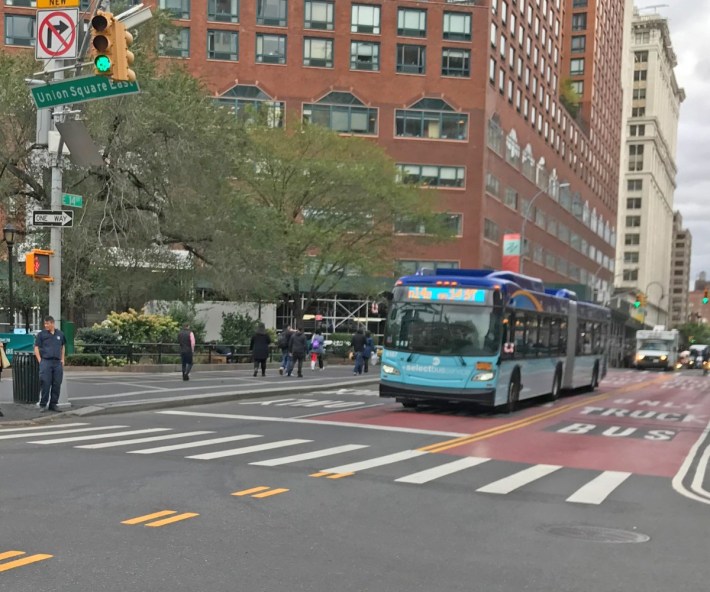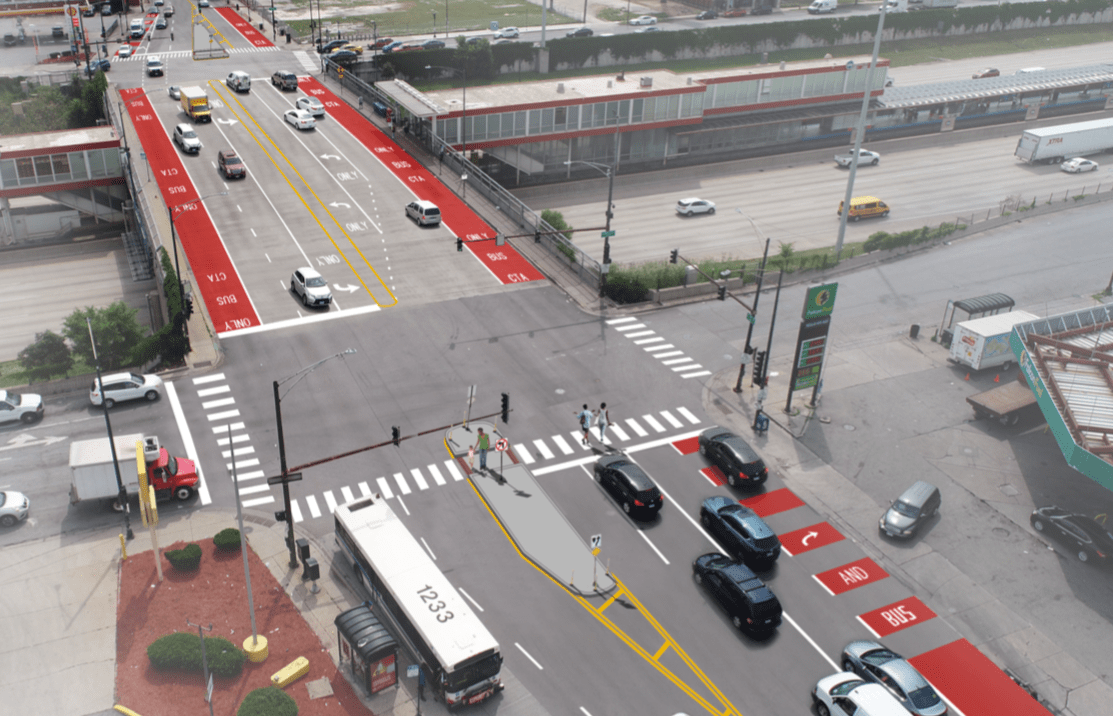To be honest, when I first read about the new ride-hail tax Mayor Lori Lightfoot is proposing, my impression was that the plan doesn't have enough teeth for improving transit service. There was one phrase that really stuck out to me. About $2 million from the estimated $40 million the fees will raise will be earmarked for CTA upgrades, including “partial dedicated [bus] lanes” as part of the city's Bus Priority Zone program.
Routes that will see upgrades include five of the city’s highest-ridership routes: #8 Halsted, #49 Western, #53 Pulaski, #63 63rd Street, and #77 Belmont, as well as the #79 79th Street and #66 Chicago Avenue routes.
These partial dedicated bus lanes are a half-measure. I fear that motorists will drive and park in the bus lanes with impunity, as they currently do in the downtown Loop Link lanes. Lightfoot has said she wants to get legislation passed in Springfield that will allow for camera enforcement of the lanes, but that doesn't seem to be happening anytime soon.
I'm also concerned that these partial dedicated lanes will not be enough to boost bus speeds to a level that will win back former bus riders and entice new ones. And, as a Rogers Park resident, I was disappointed that important routes on my side of town weren't included, like the #36 Broadway, #22 Clark, #155 Devon, #151 Sheridan, or the #147 Outer Drive Express.
I'm also disappointed that only about 5 percent of the project tax revenue will go towards transit. While I realize that the mayor has an estimated $848 million budget gap to fill, spending such a small percentage of the revenue on transit is very shortsighted and is a sign that the administration does not understand the urgency in improving bus speeds, reliability, and frequency.
I am glad the bus lines chosen for the first phase of the Bus Priority Zone program are high-ridership routes. However, I wonder how many riders could be gained if we also focused on routes that could see higher ridership if they had a full dedicated lanes for the majority of the route, signal priority at lights, and higher frequency.
There's also the low-hanging fruit of creating dedicated lanes for buses on Michigan Avenue, a street that carries many bus routes and has no parking lanes. It obviously sees a high number of downtown workers and visitors who could be well served by fast bus service that isn't obstructed by private cars.

I understand that this is only Lightfoot's first year of her term, yet this could have been an opportunity to present something big, bold, and transformative for Chicago's transit system. We need leadership that understands the urgent necessity in reducing our transportation emissions, improving transit service, and doing so in an equitable way.
Lightfoot's plan to give folks on the South and West sides of the city a small tax discount on their Uber and Lyft trips (most rides hailed in these parts of town are shared trips, which will see a 10 percent tax cut) is a nod to the transit inequity of the status quo. I just wish we could propose and fund bolder transportation plans that will drastically reduce the need for anyone in Chicago to use ride-hail at all.
Currently there's a sad feedback loop of people feeling fed up with slow, unreliable, and infrequent bus service and taking ride-hail to attempt to reach their destination in a timely manner. This additional driving increases congestion which slows bus service for the remaining bus riders, and puts people on bike and foot at risk. Increasing bus speeds, reliability, and frequency isn't rocket science. It's past time Chicago goes all in on improving bus service. Let's encourage our alders and new mayor to do more to make this a reality.






